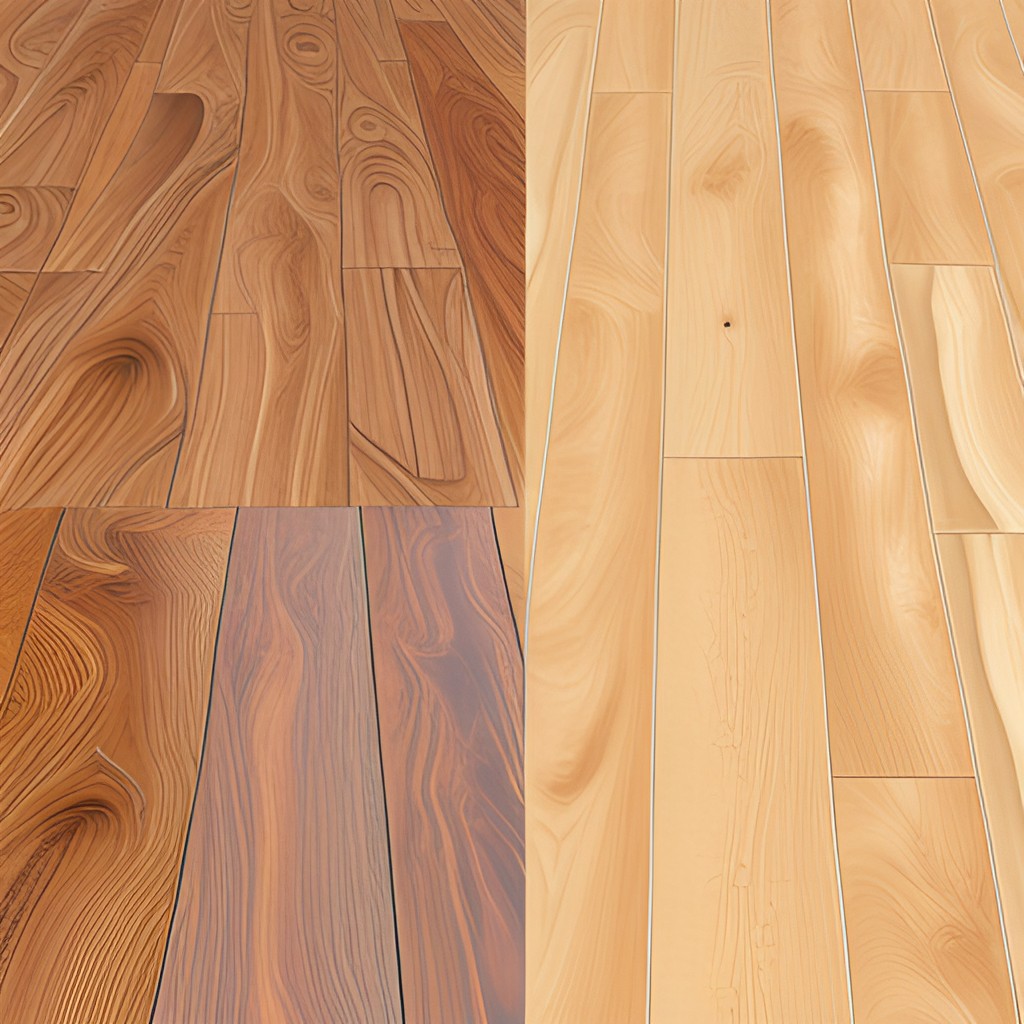Wood flooring is a timeless and elegant choice for enhancing any home’s aesthetic appeal and value. It adds warmth, beauty, and a sense of sophistication to interior spaces. Hickory and maple are popular among the many options available, each offering unique characteristics and benefits.
Choosing the right type of wood flooring is crucial as it affects the look and feel of a space and its durability, maintenance requirements, and overall performance.
A brief overview of wood flooring reveals a myriad of varieties, each with its own set of features, ranging from different grains and textures to various hardness and color palettes.
Some woods are better suited for high-traffic areas due to their durability, while others might be selected for their rich tones or fine-grain patterns.
Selecting the appropriate wood type is paramount because it ensures the flooring meets the household’s specific needs and lifestyle. The right flooring can withstand daily wear and tear, complement the home’s interior design, and contribute to better indoor air quality.
Therefore, a well-informed decision about wood flooring can significantly enhance your living space’s long-term satisfaction and functionality.
Characteristics of Hickory
Appearance
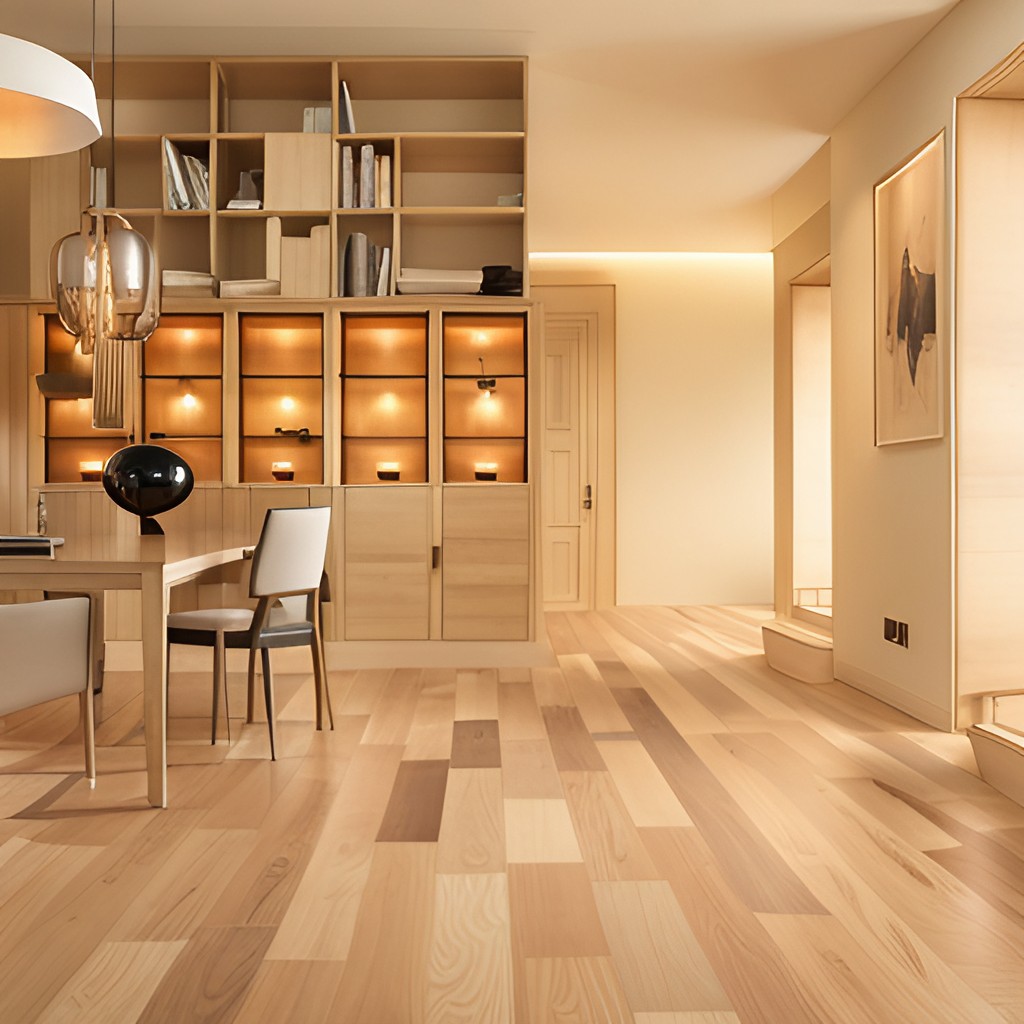
Hickory wood is known for its striking appearance and bold and varied grain pattern. It often features a combination of darker streaks and lighter areas, creating a visually dynamic and rustic look.
The color palette of hickory ranges from light beige to rich reddish-brown hues, making it an appealing choice for those seeking a more dramatic and natural aesthetic in their flooring.
Maple wood, on the other hand, offers a more uniform and subtle appearance. Its fine, straight grain and light, creamy tones give it a sleek and modern look.
Maple can sometimes display slight variations in color from pale blond to a soft golden brown, but overall, it presents a more consistent and understated elegance compared to hickory. This makes maple an excellent choice for contemporary or minimalist interior designs.
Color Variations

Hickory wood is celebrated for its diverse color variations, which can range from lighter beige and golden tones to deep, rich reddish-brown shades. This natural diversity in color adds to the rustic charm and character of hickory flooring, making each plank unique.
The blend of light and dark streaks creates a lively and warm ambiance, perfect for adding a distinct and natural touch to any room.
Grain Patterns

Hickory’s grain patterns are as varied as its colors, often featuring a combination of straight, wavy, and irregular patterns. This bold and pronounced grain is a hallmark of hickory wood, adding depth and texture to the flooring.
These patterns can provide a dramatic and eye-catching look that complements rustic, country, or traditional interiors. The unique grain also helps to conceal minor scratches and dents, maintaining the floor’s aesthetic appeal over time.
Durability
Renowned for its exceptional durability, hickory is one of the hardest domestic hardwoods available. Its high density makes it highly resistant to wear and tear, making it an ideal choice for high-traffic areas and households with children and pets.
Despite its hardness, hickory still offers some flexibility underfoot, providing a comfortable yet resilient flooring option.
With proper care and maintenance, hickory flooring can withstand the test of time, continuing to look beautiful and function effectively for many years.
Hardness Rating
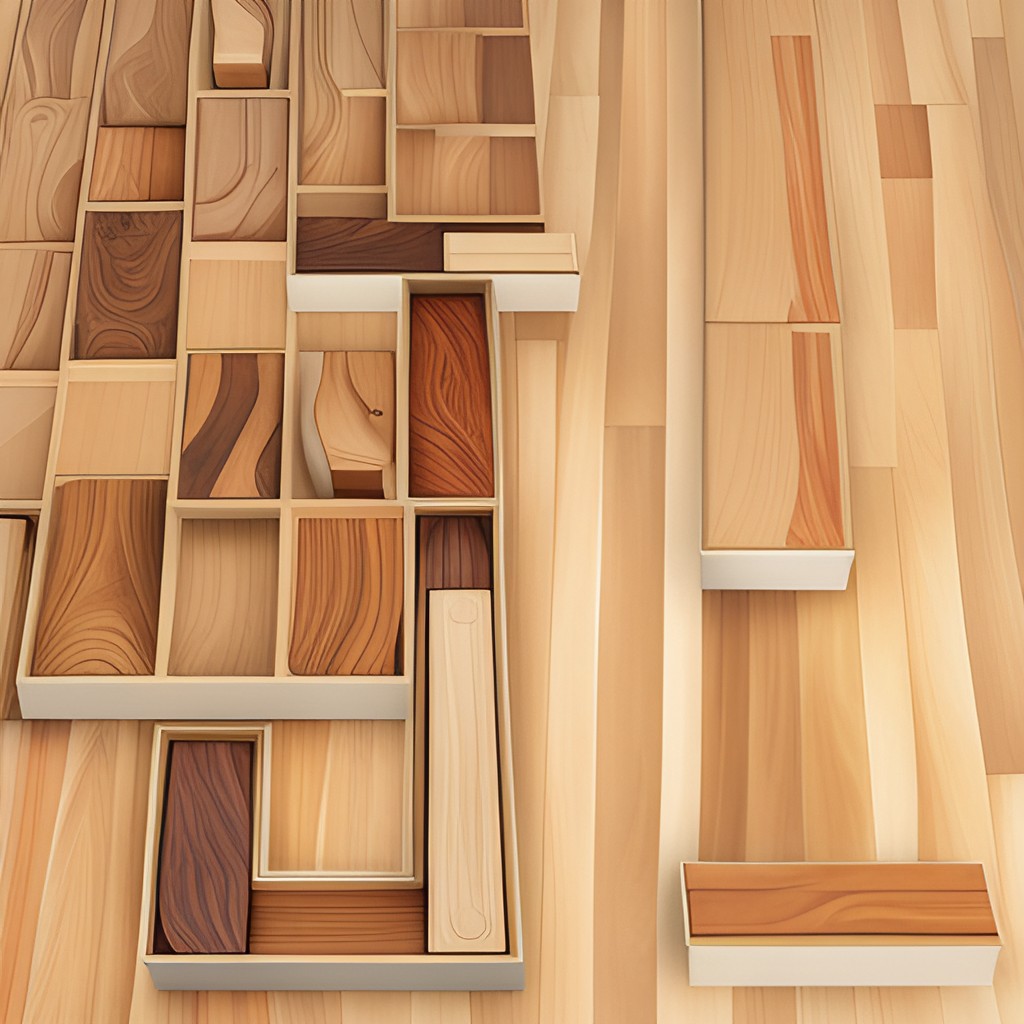
Hickory wood boasts an impressive hardness rating, making it one of the toughest domestic hardwoods available. It ranks highly on the Janka hardness scale, which measures the resistance of wood to wear and denting.
This high rating underscores the wood’s robustness and contributes to its longevity as a desirable flooring material.
Resistance to Wear and Tear
Thanks to its high density and hardness, hickory is exceptionally resistant to wear and tear. This makes it an excellent option for areas in the home that experience heavy foot traffic, such as living rooms, hallways, and kitchens.
Additionally, hickory floors are well-suited for homes with children and pets, as they can withstand daily activities without showing significant signs of damage.
Cost
While hickory offers many benefits in terms of durability and aesthetic appeal, it tends to be more expensive compared to other hardwood flooring options. The cost can be justified by its long-lasting nature and unique characteristics, but homeowners need to budget accordingly.
Investing in hickory flooring is often seen as a worthwhile expense due to its potential to add value to a property.
Maintenance Requirements
Maintaining hickory flooring is relatively straightforward, but it does require some regular attention to preserve its beauty and integrity. Routine sweeping or vacuuming helps to remove dirt and debris that could scratch the surface.
Additionally, occasional mopping with a wood-friendly cleaner is recommended to keep the floor looking vibrant. It’s also advisable to use protective pads on furniture legs and promptly clean up spills to prevent any potential damage.
Related Topic: Installing Hickory Wood Flooring Like a Pro
Characteristics of Maple
Appearance
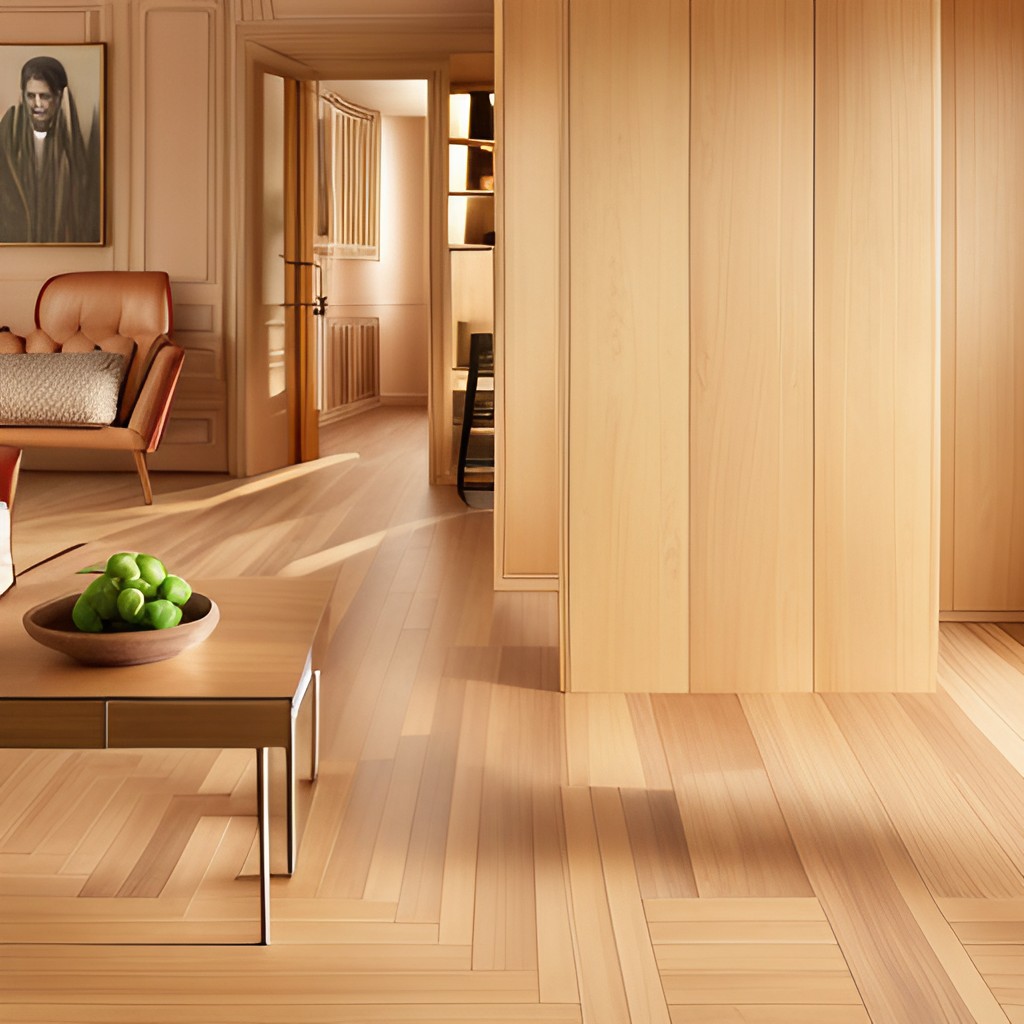
Hickory flooring is known for its striking and distinctive appearance. The wood features a rustic charm that adds a unique character to any space. Its natural, complex patterns can give a room a warm and inviting ambiance, making it a popular choice for both traditional and contemporary interiors.
Color Variations
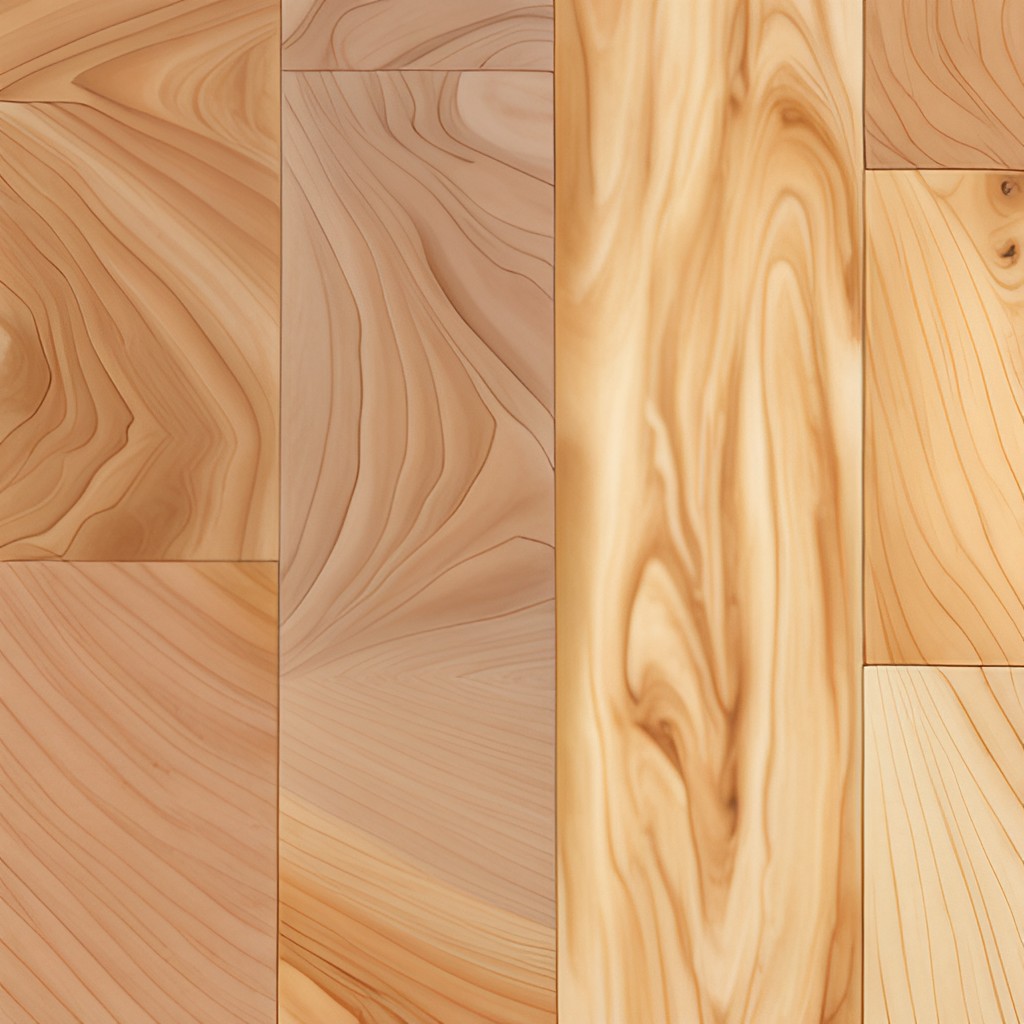
One of the remarkable features of hickory is its wide range of color variations. The wood can vary from creamy whites and tans to rich browns and deep reds.
This variety allows homeowners to select hues that best match their decor preferences, offering a level of versatility that is unmatched by many other types of hardwood flooring.
Grain Patterns
Hickory is noted for its pronounced grain patterns. The wood displays a mix of fine and bold grains, often with striking streaks and occasional knots. These patterns contribute to the wood’s unique aesthetics, providing a visually dynamic surface that adds depth and interest to any room.
Durability
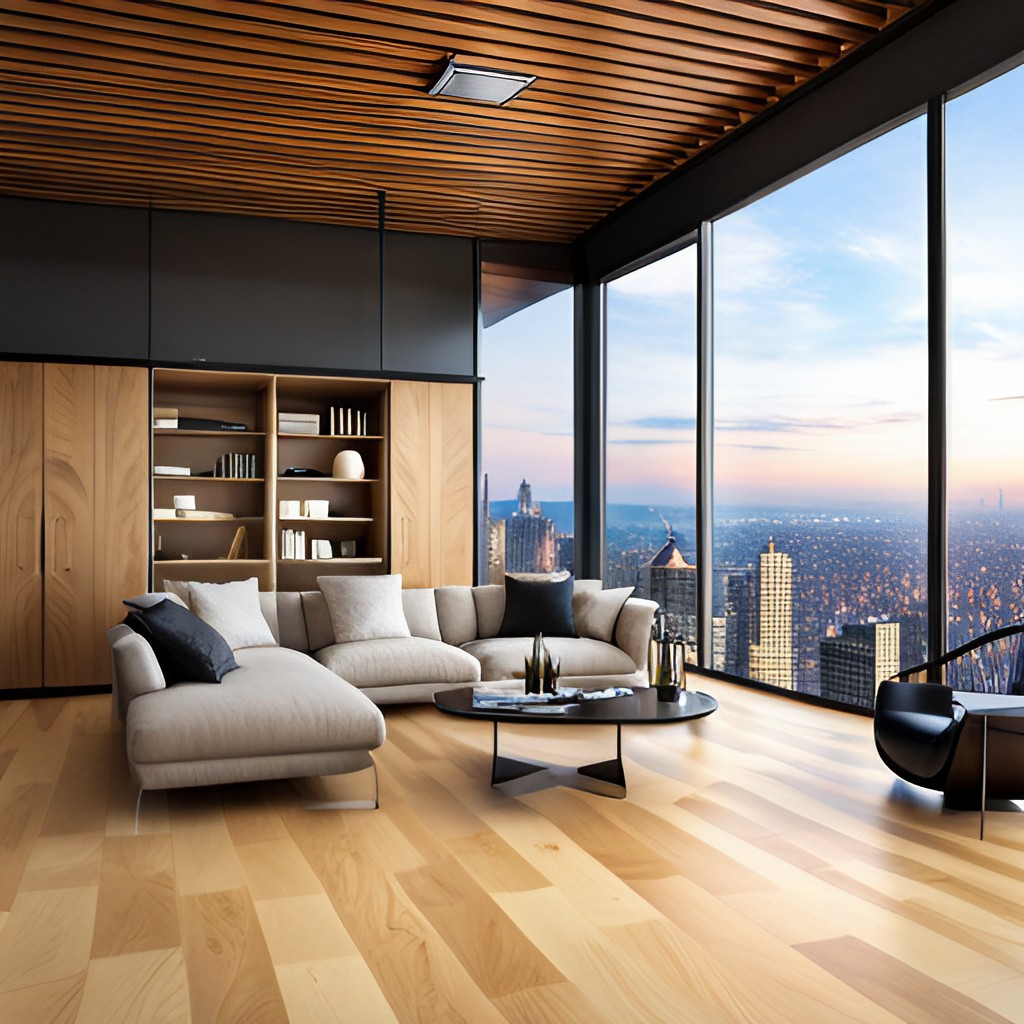
Hickory’s high density makes it one of the toughest and most durable hardwood flooring options available. Its resilience to wear and tear ensures that it stands up well under heavy use, making it an ideal choice for high-traffic areas.
This durability not only extends the life of the flooring but also maintains its attractive appearance over time.
Hardness Rating
Hickory boasts an impressive hardness rating, making it one of the sturdiest hardwoods available for flooring. On the Janka hardness scale, hickory ranks around 1,820, which is significantly higher compared to other common hardwoods like oak or maple.
This superior hardness translates into a stronger flooring material that is less susceptible to dents, dings, and other forms of physical damage, thereby ensuring a long-lasting and aesthetically pleasing floor surface.
Resistance to Wear and Tear
One of the standout features of hickory flooring is its exceptional resistance to wear and tear. Thanks to its high density and robust nature, hickory handles heavy foot traffic exceptionally well without showing signs of significant wear.
This makes it an excellent choice for areas that experience considerable daily use, such as hallways, living rooms, and kitchens.
Hickory’s ability to withstand the rigors of everyday life while maintaining its stunning appearance makes it a wise investment for homeowners seeking both beauty and durability in their flooring choice.
Cost
When considering hickory flooring, it’s essential to account for its cost implications. Typically, hickory tends to be more expensive than other hardwood options due to its superior durability and distinctive appearance.
The initial investment can vary significantly based on factors such as quality, finish, and installation methods.
Despite the higher upfront cost, many homeowners find that the longevity and resilience of hickory make it a cost-effective option in the long run, as it often requires fewer repairs and replacements over time compared to softer wood alternatives.
Maintenance Requirements
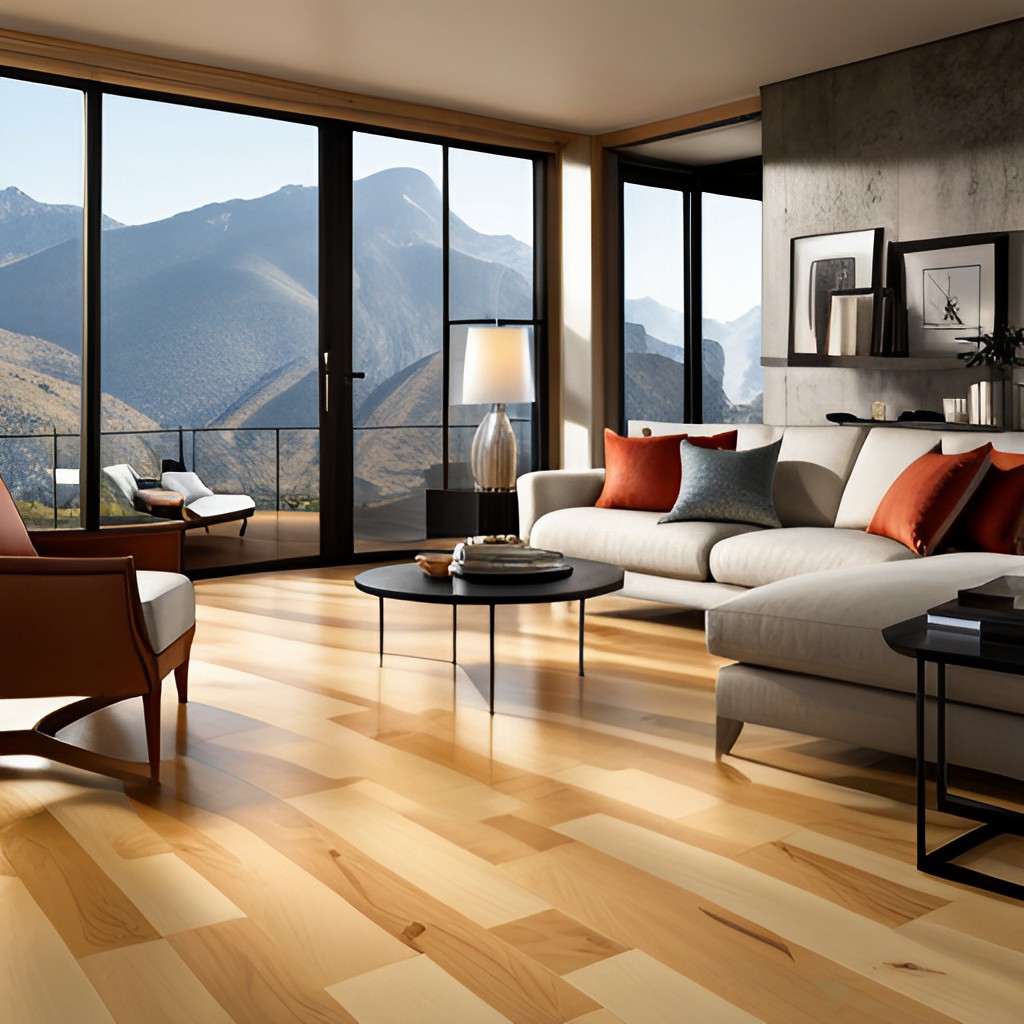
Maintaining hickory flooring is relatively straightforward, thanks to its robust characteristics. Regular cleaning using a soft broom or vacuum ensures that dirt and debris do not scratch the surface.
Periodic damp mopping with a manufacturer-recommended cleaner helps to keep the floor sparkling and free from stains. While hickory is quite resilient, it’s advisable to use felt pads under furniture legs to prevent scratching.
Additionally, maintaining a stable indoor humidity level can prevent the wood from expanding or contracting excessively, thereby preserving its integrity and appearance.
Related Topics:
Comparison of Hickory vs. Maple
Appearance and Aesthetic Appeal
When comparing the appearance and aesthetic appeal of hickory and maple flooring, each brings its own unique set of visual characteristics that can strongly influence the atmosphere of a space.
Hickory is renowned for its striking grain patterns and wide range of color variations, from creamy whites to rich, dark browns. This diversity can create a visually dynamic floor that adds a touch of rustic charm or dramatic flair, depending on the chosen finish and plank arrangement.
Maple, on the other hand, is prized for its smooth, consistent grain and lighter hues. Generally softer in color, maple flooring typically ranges from pale creams to light tans, sometimes with subtle hints of redness.
This uniformity lends itself to a more contemporary or minimalist aesthetic, ideal for creating clean, airy spaces that feel open and inviting.
While hickory’s bold patterns can be a statement piece in any interior, maple offers a more subdued elegance that allows other design elements to shine.
The choice between hickory and maple ultimately depends on the desired ambiance; hickory for warmth and variety, and maple for a sleek, cohesive look.
Durability and Longevity
When evaluating the durability and longevity of hickory and maple flooring, it is essential to consider their respective hardness levels and resistance to wear.
Hickory is one of the hardest domestic woods available, boasting a Janka hardness rating of approximately 1820. This impressive hardness makes hickory highly resistant to scratches, dents, and wear and tear, making it an excellent choice for high-traffic areas and homes with active families or pets.
Furthermore, its robust nature ensures that hickory flooring will maintain its aesthetic appeal for many years, even in demanding environments.
Maple, while not as hard as Hickory, still possesses a respectable Janka hardness rating of about 1450. This makes it a durable option that can withstand regular foot traffic and moderate impacts without significant damage.
Maple’s hardness, combined with its smooth grain, helps to hide minor scratches and scuffs, contributing to its longevity. However, in extremely high-traffic scenarios, it may show signs of wear sooner than hickory.
Both hickory and maple are capable of lasting for decades when properly maintained. Regular cleaning, the use of appropriate finishes, and periodic refinishing can all contribute to extending the life of these wood floors.
Hickory’s superior hardness may reduce the frequency of necessary repairs and refinishing, which can be a considerable advantage over time.
Maple, with its slightly softer composition, may require more regular attention to maintain its pristine condition but remains a robust and long-lasting choice.
Cost Comparison
When comparing the costs of hickory and maple flooring, several factors come into play. Hickory tends to be more expensive than maple due to its exceptional hardness and durability.
The initial purchase price of hickory flooring is generally higher, reflecting its premium status and the robust nature of the wood. Additionally, the installation cost for hickory may be slightly increased due to the wood’s density, which can be more challenging to work with.
On the other hand, maple flooring offers a more budget-friendly alternative while still providing admirable durability and aesthetic appeal.
Though it may not match hickory in terms of hardness, its lower cost makes it a popular choice for homeowners looking for a balance between performance and expenditure.
Maintenance costs should also be factored into the overall cost comparison. Hickory, with its superior resistance to wear and damage, may incur lower long-term maintenance expenses, whereas maple might require more frequent care and refinishing, potentially increasing its lifetime cost.
Maintenance and Care Needs
Proper maintenance and care are essential to preserving the beauty and longevity of both hickory and maple flooring. Hickory flooring, with its natural hardness and durability, generally requires less frequent maintenance.
Regular sweeping or vacuuming to remove debris and occasional mopping with a wood-safe cleaner are usually sufficient to keep hickory floors in excellent condition.
Additionally, hickory’s high resistance to dents and scratches means less frequent refinishing, saving both time and effort in the long run.
In contrast, maple flooring, while still durable, is slightly softer and thus more prone to scratches and dents. This necessitates a more diligent maintenance routine. Regular cleaning is essential to prevent grit and dirt from causing surface damage, and using area rugs or runners in high-traffic zones can help minimize wear.
Maple flooring may also benefit from periodic refinishing to restore its luster and protect the wood from damage. Despite these additional maintenance needs, properly cared-for maple floors can offer lasting beauty and functionality.
Best Uses and Applications
Ideal Environments for Hickory
Hickory flooring is particularly well-suited for areas that experience high foot traffic and heavy use due to its unparalleled hardness and durability. Its robust resilience makes it an excellent choice for busy households, entryways, kitchens, and living rooms where long-term wear and tear are a concern.
Moreover, hickory’s distinctive grain patterns and rich color variations add a rustic yet refined charm to any space, making it a favored option for both traditional and contemporary interior designs.
Its natural hardness also means that it performs exceptionally well in commercial settings such as restaurants, retail stores, and offices where its durability is regularly put to the test.
However, it’s essential to maintain a consistent indoor environment, as hickory can be sensitive to significant fluctuations in humidity and temperature.
Ideal Environments for Maple
Maple flooring thrives in settings that appreciate its smooth, even texture and subtle elegance. Its lighter hue and understated grain pattern make it an excellent choice for modern and minimalist interiors, where a clean and bright aesthetic is desired.
Maple is particularly suitable for bedrooms and home offices, where a serene and polished look is often preferred.
Additionally, its relatively softer surface makes it a comfortable option for areas where barefoot walking is common, such as children’s playrooms or nurseries.
Nevertheless, care must be taken to protect maple floors from excessive moisture and avoid placing them in environments with high humidity levels, such as bathrooms or basements. With the right placement and regular maintenance, maple flooring can add a timeless beauty to a range of residential spaces.
Recommendations
When choosing between hickory and maple flooring, it’s important to consider your specific lifestyle and household needs. For families with young children or pets, hickory’s superior hardness and resistance to scratches and dents make it a practical choice, particularly in high-traffic areas.
Its durability ensures that it can withstand the rough-and-tumble of everyday life, offering longevity and ease of maintenance.
On the other hand, maple’s smooth and sleek appearance may appeal to those seeking a more refined and minimalist atmosphere in their home. If you prioritize comfort and prefer walking barefoot indoors, the slightly softer surface of maple flooring provides a pleasant experience.
Maple is also excellent for creating a light and airy aesthetic, perfect for modern and contemporary interior designs.
In summary, hickory is well-suited for dynamic households with heavy foot traffic, while maple is ideal for serene environments that emphasize style and comfort.
By aligning your flooring choice with your household’s functional demands and aesthetic preferences, you can ensure a harmonious and enduring addition to your living space.
Conclusion
In conclusion, choosing between hickory and maple wood flooring largely depends on your specific lifestyle, aesthetic preferences, and household needs. Hickory, with its extraordinary durability and striking grain patterns, is an ideal choice for high-traffic areas and dynamic households, particularly those with children and pets.
Its robustness ensures longevity and lower maintenance, making it a wise investment for those seeking both durability and a distinct rustic charm. On the other hand, maple flooring offers a smooth, light, and consistent appearance that suits modern and minimalist interiors.
Its slightly softer surface provides a comfortable underfoot experience, perfect for serene environments prioritizing style and comfort. Each wood type has its unique benefits, yet if durability and longevity are your primary considerations, hickory stands out as the superior choice.
FAQs
Which wood flooring is easier to maintain, hickory or maple?
Both hickory and maple are relatively easy to maintain with regular sweeping and occasional mopping. However, hickory’s hardness makes it more resistant to scratches and dents, which can simplify long-term maintenance.
Can hickory or maple be used in kitchens or bathrooms?
Both hickory and maple can be used in kitchens if properly sealed to protect against moisture. However, it is generally not recommended to use solid wood flooring, including hickory and maple, in bathrooms due to high humidity levels.
How do hickory and maple flooring handle temperature changes?
Hickory and maple both handle temperature changes reasonably well, but Hickory is slightly more stable due to its hardness. It’s important to maintain a consistent indoor environment to prevent wood flooring from expanding and contracting significantly.
